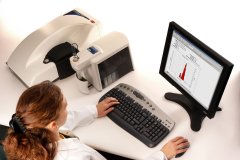Researchers at Nottingham Trent University in the UK are using the Zetasizer Nano ZS particle characterization system from Malvern Panalytical in work that has demonstrated the predominantly electrostatic nature of protein-aluminium interactions. This advance brings science a step closer towards being able to build novel aluminium-composite materials using naturally occurring biological processes.

Using biological processes to engineer nano-composite material structure is referred to as biomimetic-nanotectonic manipulation. By combining aluminium nanoparticles with proteins the Nottingham scientists took advantage of spontaneous biological assembly to fabricate highly organized structures called Keggin ions. These ions are the building blocks for advanced aluminium materials with highly specific properties used in applications such as antiperspirants, biosensors, environmental control systems and biomedical devices.
Manipulation of materials combining biological molecules with nanoparticles relies heavily on understanding interparticle interactions. The effects of surface charge on the participating particles and surrounding media dominate many of these. Researchers Olivier Deschaume, Kirill Shafran and Carole Perry reported on the effects of a model protein, bovine serum albumin (BSA), on the generation and properties of hybrid Al-protein composite materials formed from various high-purity, Al-containing, aqueous nanosized precursors.
The Zetasizer Nano ZS from Malvern Panalytical makes particle size measurements, down to nano- and sub-nanometer ranges possible using dynamic light scattering. Using this system the research team achieved the sensitivity required to characterize the effect of aluminium hydroxide's surface charge on predominantly electrostatic interactions with the model protein.
The Malvern Zetasizer Nano